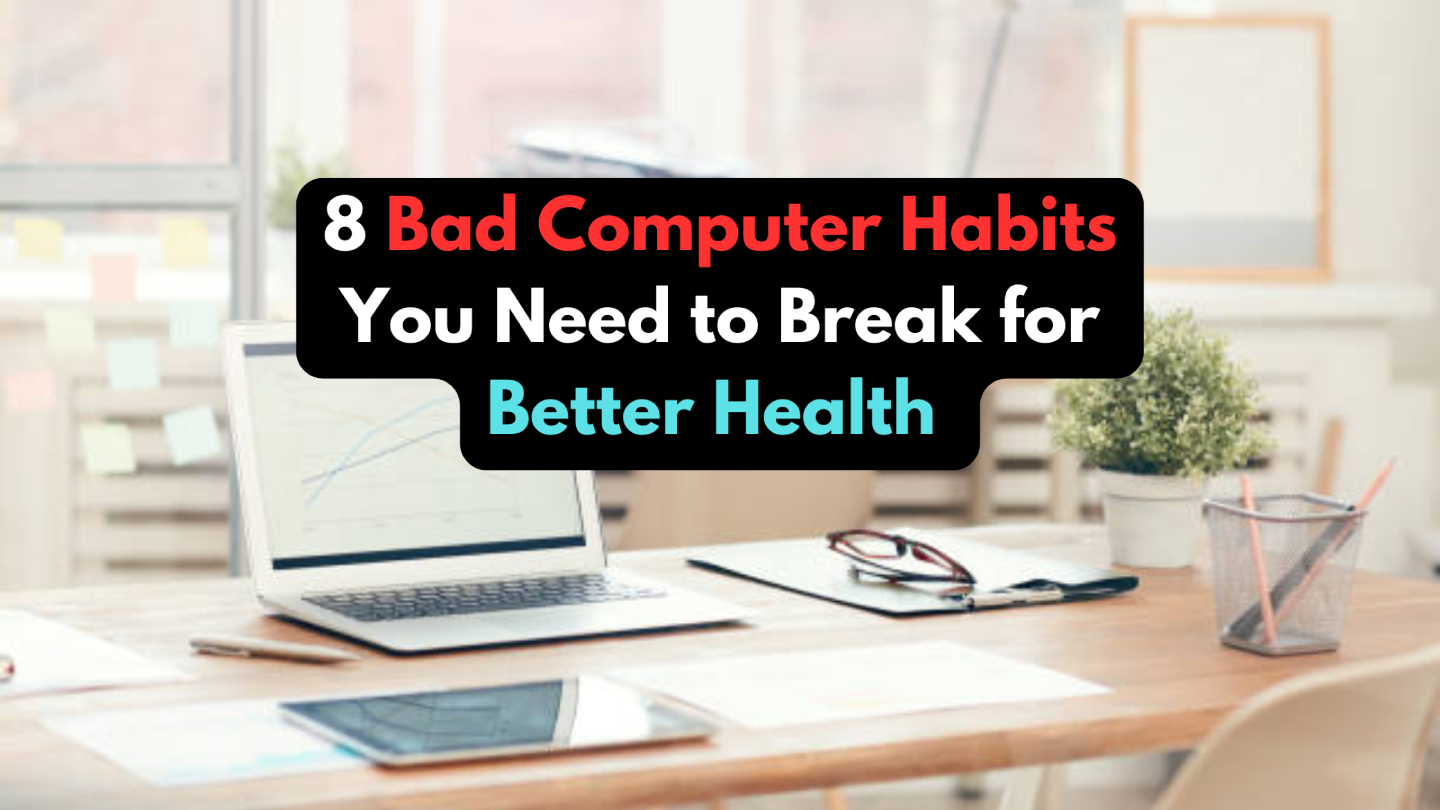
In today’s digital age, computers have become central to both our work and leisure. However, the habits we form around computer use can have a significant impact on our physical health and productivity. Recent studies and statistics highlight that even small changes in our daily routines can lead to noticeable improvements in our well-being. Here’s an in-depth look at eight common bad computer habits, supported by research and actionable tips to help you make better choices.
-
Poor Posture
Poor posture while using a computer is one of the leading causes of chronic back pain and neck strain. The American Chiropractic Association reports that between 60% and 80% of adults experience back pain at some point in their lives, with many cases attributed to poor ergonomics. Studies suggest that adopting proper posture-such as ensuring your chair supports the natural curve of your spine and positioning your monitor at eye level-can reduce discomfort by up to 50%. Over time, these adjustments not only alleviate pain but also improve focus and overall productivity. -
Not Taking Regular Breaks
Long, uninterrupted hours in front of the computer can lead to eye strain, headaches, and musculoskeletal disorders. Research has shown that individuals who take regular, brief breaks during extended computer sessions can reduce their risk of developing these issues by around 30%. The 20-20-20 rule (every 20 minutes, look at something 20 feet away for at least 20 seconds) is an effective method to lessen eye strain, while short walks or simple stretching exercises during breaks can help maintain muscle flexibility and reduce fatigue.
-
Ignoring Eye Care
Extended screen time is a major contributor to digital eye strain, a condition characterized by dryness, blurred vision, and headaches. The American Optometric Association estimates that around 70% of computer users experience symptoms of digital eye strain. To combat this, it is important to adjust screen brightness to match ambient lighting and to use blue light filters when possible. Regular eye exams and adherence to the 20-20-20 rule are crucial in preserving your vision over the long term.
-
Unhealthy Snacking
Working at a computer for prolonged periods can often lead to mindless snacking, which in turn may contribute to weight gain and related health complications. A study published in the Journal of Nutrition indicates that frequent snacking during sedentary work can increase the risk of obesity-related complications by up to 20% compared to maintaining a balanced diet. Instead of reaching for processed or sugary foods, try to keep healthy snacks like fruits, vegetables, and nuts at your desk to sustain your energy levels without compromising your health. -
Not Staying Hydrated
Dehydration can exacerbate the effects of eye strain and fatigue while impairing cognitive function. Research from the Journal of the American College of Nutrition suggests that even mild dehydration can negatively affect concentration and overall brain performance. Studies have found that approximately 75% of adults do not consume enough water throughout the day. Keeping a water bottle nearby and setting reminders to drink water regularly can help maintain hydration and improve your mental clarity. -
Inadequate Workspace Setup
An improperly designed workspace is a common culprit behind discomfort and repetitive strain injuries. OSHA identifies poor ergonomic practices as one of the main causes of workplace musculoskeletal disorders. Investing in ergonomic accessories-such as chairs, keyboards, and mice that support proper alignment-can significantly reduce the risk of injury and improve your comfort. A well-organized workspace not only helps prevent physical strain but also contributes to a more efficient work environment. -
Not Managing Screen Time Before Bed
Using digital devices right before bed is strongly linked to disrupted sleep patterns. The National Sleep Foundation reports that nearly 90% of people use screens within 30 minutes of bedtime, which can interfere with the production of melatonin, the hormone responsible for regulating sleep. Poor sleep quality has been associated with decreased cognitive performance and a higher risk of chronic conditions. Powering down devices at least an hour before bedtime can improve sleep quality and help maintain a healthier sleep cycle.

-
Neglecting Physical Activity
Sitting for long periods is a key factor in the development of a sedentary lifestyle, which has been linked to various health issues such as cardiovascular disease, obesity, and type 2 diabetes. The World Health Organization recommends at least 150 minutes of moderate exercise per week, yet studies reveal that approximately 27.5% of adults worldwide fail to meet these guidelines. Incorporating regular physical activity into your daily routine-even simple stretching, walking, or short workout sessions-can counteract the negative effects of prolonged sitting and boost overall fitness.
Conclusion:
Adopting better computer habits can lead to substantial improvements in your health and productivity. The statistics and research outlined above demonstrate that even minor adjustments-such as maintaining proper posture, taking regular breaks, and managing screen time-can have a meaningful impact on your physical and mental well-being. To further optimize your workflow and maintain a healthy balance, integrate BLiiNK into your routine. By combining improved habits with the right technological support, you can enjoy a safer and more productive digital life.
